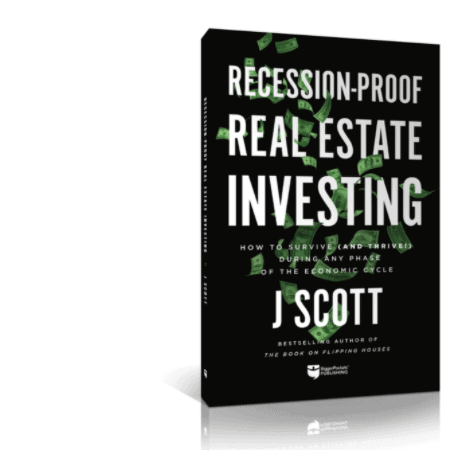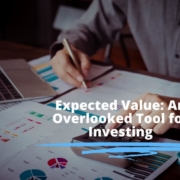The Overlooked Tool Every Investor Needs
I was talking with another investor recently and used a term I assumed he would be familiar with. He wasn’t, which led me to realize that a simple but very effective tool for decision-making was likely to be overlooked by many others as well.
The tool/concept is called expected value (EV), and I’m most familiar with this concept because I spent my youth playing way too much high-stakes poker.
In poker, EV is one of the most common tools used to determine an optimal decision (fold, call, raise, etc.) in the middle of a hand, especially in big situations where all the chips are on the line.
But, EV can be applied to a wide range of decisions, including decisions related to our investments.
How Does Expected Value Work?
Let’s look at how EV works, using a straightforward example from the poker world.
We’re sitting in a poker game. It’s the end of the hand, and there’s $400 in the pot, and the other player in the hand bets $100, making the pot $500, requiring you to put in $100 to see a show-down.
You have a decision to make: Do you call the $100 bet or not?
While I could give you all the details of the hand—what cards you have, how the betting played out, whether the other player looks nervous. The only piece of information you need to make an optimal decision about whether to call is what you estimate the likelihood of you having the best hand (and therefore winning the pot).
To determine the expected value for a decision, you multiply the probability of each possible outcome by the value of that outcome and then add up the results.
In this case, there are three possible outcomes:
- You have the best hand and win
- You have the worst hand and lose
- You have the same hand (we’ll ignore this)
Let’s say that you believe there’s a 25% chance that you have the best hand and a 75% chance of having the worst hand. In other words, you will most likely lose, regardless of what you do.
But what about the expected value?
There’s a 25% chance of the first scenario above happening (you having the best hand and win), and if it does, you’ll win $500 (the amount in the pot). There’s a 75% chance of the second scenario happening (you have the worst hand and lose), and if it does, you’ll lose $100 (the amount you need to spend to call the bet).
To determine the EV, we multiply the probability by the outcome for each scenario and add them up:
EV = (25% * $500) + (75% * -$100)
EV = ($125) + (-$75)
EV = $50
The Expected Value is $50. What does this mean?
It means that, while we have no idea if we’ll win $500 or lose $100 this hand, if we were to play out this exact situation a million times, we should expect to win, on average, $50 per situation.
A good poker player knows that while there is a 75% chance of losing this hand and going broke. Over the long term, taking that risk every time it comes up will ultimately make money.
In fact, if a poker player finds themselves in this exact situation 100 times, they should expect to earn 100 * $50 = $5,000 across all these situations.
A positive expected value investment/decision is one that you should always consider making. A negative EV investment/decision is one that you should always consider passing on.
Had the expected value for the poker situation above been negative, a fold would have been the right move.
How Expected Value Applies to Other Investment Decisions
We can apply the same logic to other types of decisions and different types of investments.
For example, it’s typical for house flippers who do a high volume of deals to consider “self-insuring” their properties. This means they don’t get insurance for the flips and assume the risk/cost themselves.
But is it smart to self-insure your flips? Let’s make some assumptions and run an EV equation.
Let’s assume:
- A typical insurance policy for a house flip will cost $1,000
- 1 in 50 flips (2%) will have a small ($10,000) claim
- 1 in 200 flips (.5%) will have a big ($100,000) claim
- The rest of the flips (97.5%) will have no insurance claim
Should we pay the $1,000 in insurance for each of our flips? Or self-insure?
Let’s take a look at the EV for self-insuring. We’ll start with the possible outcomes and the value of each:
- 97.5% of the time, there would be no claim. Therefore, no out-of-pocket cost.
- 2% of the time, there would be a small claim of $10,000 that we’d have to pay out-of-pocket.
- .5% of the time, there would be a large claim of $100,000 that we’d have to pay out-of-pocket.
EV = (97.5% * $0) + (2% * $10,000) + (.5% * $100,000)
EV = $0 + $200 + $500
EV = $700
The EV on self-insuring is $700. That means, on average, we’d spend $700 per project paying for things that would have otherwise been covered by insurance.
In other words, if we were to do 100 flips, we could expect that we’d save about $300 per flip by self-insuring. Or $30,000 across all 100 flips!
Final Thoughts
While this is highly simplified, and you’ll have to use the numbers that make sense for your flips (both insurance costs and likely claims), you can see why many house flippers who are doing large volumes of flips choose to self-insure.
There are thousands of scenarios you’ll run into, both with your investments and daily life, where expected value calculations allow you to make much better decisions than just “going with your gut”.
Disclaimers about expected value
- Yes, there was another option in the poker example (raising). We’re ignoring that one.
- Yes, this discussion ignores variance. Sometimes, lower variance is more important than higher EV.
- Yes, you need to consider other things besides EV, especially when it comes to catastrophic risk (risk of losing everything).
- Yes, this requires that you are good at estimating the probability of each outcome and the value for each outcome, which can be difficult.

Prepare for a market shift
Modify your investing tactics—not only to survive an economic downturn, but to also thrive! Take any recession in stride and never be intimidated by a market shift again with Recession-Proof Real Estate Investing.




 :215-447-7209
:215-447-7209 : deals(at)frankbuysphilly.com
: deals(at)frankbuysphilly.com
